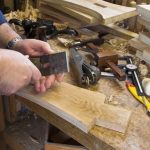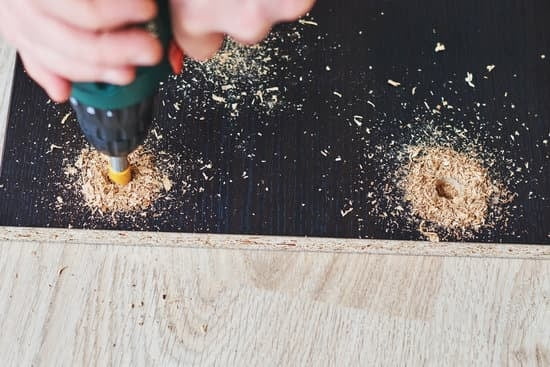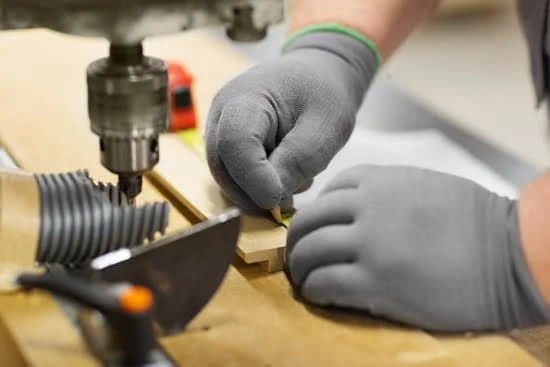Woodworking is a craft that requires precision, skill, and attention to detail. However, one aspect of woodworking that is often overlooked is the noise levels produced by the various tools used in the workshop. Understanding how many decibels woodworking saws generate is essential not only for protecting your hearing but also for creating a safe and comfortable working environment.
The measurement of noise levels in woodworking saws is crucial in ensuring a healthy workspace. Decibels are used to quantify sound levels, indicating the intensity of noise being produced. Different types of woodworking saws can vary in their decibel levels depending on factors such as motor power, blade size, and cutting material. By understanding these decibel levels, woodworkers can take necessary precautions to prevent hearing damage and minimize overall noise pollution.
Factors such as blade type, cutting speed, and usage frequency can influence the noise levels generated by woodworking saws. Table saws, circular saws, and miter saws are among the most common tools used in woodworking projects, each producing differing decibel levels. It is important for woodworkers to be aware of these variations to make informed decisions about equipment selection and workshop layout to create a quieter work environment.
Importance of Understanding Decibel Levels in Woodworking Saws
Woodworking can be a fulfilling and engaging hobby or profession, but it is important to consider the potential impact of noise levels on your health and well-being. Understanding how many decibels woodworking saws produce is crucial for protecting your hearing and maintaining a safe working environment. Excessive noise exposure from woodworking tools can lead to permanent hearing damage over time, so it is essential to take steps to mitigate these risks.
The decibel level of woodworking saws can vary depending on the type of saw being used, the material being cut, and other factors. On average, most woodworking saws generate around 85 to 100 decibels of noise during operation.
Table saws tend to produce higher decibel levels compared to circular saws or miter saws due to their larger and more powerful motors. It is vital for woodworkers to be aware of these noise levels and take precautions such as wearing ear protection when operating loud machinery.
In addition to wearing ear protection, there are other ways to minimize noise in woodworking workshops. Implementing sound-absorbing materials like foam panels on walls or ceilings can help reduce reverberations and lower overall noise levels. Regular maintenance of woodworking tools can also prevent excessive vibration and noise output. By understanding the relationship between decibels and woodworking saws, you can create a safer and more comfortable working environment for yourself and those around you.
| Woodworking Saw Type | Average Decibel Level |
|---|---|
| Table Saw | 90-110 dB |
| Circular Saw | 85-100 dB |
| Miter Saw | 80-95 dB |
Factors Affecting Noise Levels in Woodworking Saws
Woodworking saws can produce a significant amount of noise during operation, which can not only be disruptive but also potentially harmful to your hearing. Understanding the factors that affect the noise levels produced by woodworking saws is crucial in creating a safer and more comfortable working environment in your workshop. Here are some key factors that can influence the decibel levels of woodworking saws:
- Saw Type: Different types of woodworking saws, such as table saws, circular saws, and miter saws, produce varying levels of noise. Table saws, for example, are known to generate higher decibels due to their larger blades and motor sizes.
- Blade Quality: The quality and condition of the blade used in a woodworking saw can impact the noise levels it produces. Dull or improperly maintained blades can create more vibration and noise during cutting.
- Material Being Cut: The type of material being cut by the woodworking saw can also affect the noise levels. Harder materials may require more power from the saw, resulting in increased noise output.
It’s essential to consider these factors when working with woodworking saws to minimize the noise levels and protect both your hearing and overall well-being. By being aware of what influences the decibel levels of your tools, you can take steps to reduce unnecessary noise in your workshop environment.
In addition to understanding these factors, implementing proper maintenance practices for your woodworking tools can help keep noise levels at a minimum. Regularly inspecting and cleaning your saw blades, as well as ensuring they are properly lubricated and aligned, can contribute to quieter operation. Investing in high-quality blades designed for reducing sound output can also make a difference in minimizing noise levels while still achieving efficient cutting results.
Average Decibel Levels of Different Types of Woodworking Saws
Woodworking saws are essential tools in any woodworking shop, but they can also be a significant source of noise. Understanding the average decibel levels of different types of woodworking saws is crucial for protecting your hearing and creating a safe working environment. By knowing the noise levels produced by these tools, woodworkers can take necessary precautions to prevent hearing damage and maintain a healthy workspace.
Decibel Levels of Table Saws
Table saws are known for their versatility and power, but they can also generate high levels of noise. On average, table saws produce around 85 to 100 decibels of sound when in operation. The loud noise generated by table saws can lead to long-term hearing damage if proper precautions are not taken. It is important for woodworkers to wear ear protection when using table saws to minimize the risk of hearing loss.
Decibel Levels of Circular Saws
Circular saws are popular for their portability and efficiency, but they also emit a considerable amount of noise during use. The average decibel level of circular saws falls between 95 to 105 decibels, making them one of the loudest woodworking tools. To protect their hearing, woodworkers should always wear ear protection when operating circular saws for an extended period.
Decibel Levels of Miter Saws
Miter saws are commonly used for precise angled cuts in woodworking projects, but they can produce high levels of noise as well. The average decibel level of miter saws ranges from 90 to 110 decibels, depending on the model and brand. Due to the loud noise emitted by miter saws, it is essential for woodworkers to prioritize wearing ear protection whenever operating this type of saw to safeguard their hearing health.
Understanding the decibel levels produced by different types of woodworking saws is crucial for woodworkers who want to maintain a safe and healthy working environment. By wearing ear protection and implementing noise-reducing strategies, such as soundproofing workspaces or using quieter tools when possible, woodworkers can minimize the risk of hearing damage and ensure a more comfortable workspace while pursuing their craft.
Comparison of Decibel Levels Between Table Saws, Circular Saws, and Miter Saws
Woodworking saws are essential tools in any woodworking workshop, but they can produce significant noise levels that can have an impact on your hearing over time. Understanding the decibel levels of different types of woodworking saws is crucial for both protecting your hearing and creating a safer working environment.
By comparing the noise output of table saws, circular saws, and miter saws, woodworkers can make informed decisions about which tools to use and how to mitigate the potential risks associated with high decibel levels.
Table saws are known for their versatility and power when it comes to cutting various types of wood. However, they also tend to generate higher decibel levels compared to other woodworking saws. On average, table saws can produce around 85 to 100 decibels of noise during operation.
Circular saws, on the other hand, typically range from 90 to 100 decibels, while miter saws fall within a similar range of 85 to 100 decibels. These loud noise levels highlight the importance of wearing proper hearing protection and implementing strategies to reduce sound exposure in woodworking workshops.
One effective way to lower the decibel levels produced by woodworking saws is by using sound-dampening materials such as anti-vibration pads or foam insulation mats under the machines. Additionally, regular maintenance of the saw blades and motors can help reduce unnecessary vibrations that contribute to noise output.
By being aware of how many decibels woodworking saws emit and taking proactive measures to minimize noise levels, woodworkers can create a safer and more comfortable working environment while still achieving quality results in their projects.
| Woodworking Saw Type | Average Decibel Level |
|---|---|
| Table Saw | 85-100 dB |
| Circular Saw | 90-100 dB |
| Miter Saw | 85-100 dB |
How to Measure Decibel Levels in Woodworking Saws
When it comes to woodworking saws, understanding the noise levels they produce is crucial for maintaining a safe working environment. One key measure of noise intensity is decibels (dB), which quantifies sound levels on a logarithmic scale. Decibel levels can indicate how loud a particular tool or machine is and help woodworkers assess potential risks to their hearing health.
Measuring the decibel levels of woodworking saws requires the use of specialized equipment known as sound level meters. These meters are designed to capture and quantify sound waves in the surrounding environment, providing numerical readings that reflect the intensity of noise produced by the saw. To accurately measure decibel levels, follow these steps:
- Set up the sound level meter at a distance from the woodworking saw, ensuring it is positioned in a location representative of where you typically work.
- Turn on the woodworking saw and allow it to operate at its normal speed and cutting capacity.
- Ensure that there are no other significant sources of noise present that could interfere with the accuracy of the readings.
By following these steps, woodworkers can obtain reliable measurements of the decibel levels generated by their woodworking saws. This information can then be used to assess potential risks to hearing health and take appropriate measures to minimize noise exposure in their workshops.
Tips for Minimizing Noise in Woodworking Workshops
Woodworking workshops can be noisy environments, with the sound of saws cutting through wood echoing throughout the space. It is important to take steps to minimize noise levels in order to create a more comfortable and productive working environment. By reducing the amount of noise produced by woodworking saws, you can also help protect your hearing in the long run.
One effective way to minimize noise in woodworking workshops is to invest in high-quality tools and machinery. Well-maintained woodworking saws are less likely to produce excessive noise compared to older or worn-out equipment. When choosing new tools, consider their noise levels as a factor in your purchasing decision. Look for saws that are specifically designed to operate quietly without compromising on performance.
Another tip for reducing noise in woodworking workshops is to use proper techniques when operating saws. Avoid forcing the blade through the wood, as this can create extra vibrations and increase noise levels. Instead, let the saw do the work at its own pace.
Additionally, make sure that blades are sharp and properly adjusted, as dull or misaligned blades can cause unnecessary noise during cutting. Regular maintenance and sharpening of blades can help keep noise levels at a minimum when using woodworking saws.
Safety Precautions for Protecting Your Hearing While Using Woodworking Saws
Woodworking saws can produce high levels of noise that can potentially damage your hearing over time if proper safety precautions are not taken. It is crucial to protect your ears while using woodworking equipment to prevent hearing loss and other auditory issues. In this section, we will discuss some safety precautions you can take to protect your hearing while using woodworking saws.
Wear Hearing Protection
One of the most important safety precautions you can take when using woodworking saws is wearing appropriate hearing protection. Earplugs or earmuffs are essential for reducing the impact of loud noise on your ears. Make sure to use hearing protection designed for high noise environments and ensure they fit properly to provide maximum protection.
Maintain a Safe Distance
When operating woodworking saws, try to maintain a safe distance from the machine to reduce the intensity of the noise reaching your ears. Standing too close to the saw can increase the risk of damaging your hearing. Keep a comfortable distance while still being able to operate the equipment effectively.
Limit Exposure Time
Limiting the amount of time you spend working with woodworking saws can also help reduce the risk of hearing damage. Take breaks in between tasks involving loud machinery to give your ears a rest from continuous exposure to high decibel levels. By managing your exposure time, you can protect your hearing health in the long run.
By following these safety precautions, you can minimize the risk of harming your hearing while using woodworking saws. It is essential to prioritize your ear health and take proactive measures to protect yourself from excessive noise levels in woodworking workshops. Remember that prevention is key when it comes to protecting your hearing from the potentially harmful effects of high decibel levels produced by woodworking equipment.
Conclusion
In conclusion, understanding the decibel levels of woodworking saws is essential for both hobbyists and professionals in the woodworking industry. By knowing how many decibels woodworking saws produce, individuals can take necessary precautions to protect their hearing and work in a safer environment.
The average decibel levels of different types of woodworking saws vary, with table saws typically being the loudest, followed by circular saws and miter saws. These variations highlight the importance of selecting the right type of saw for specific projects to minimize noise exposure.
Measuring decibel levels in woodworking saws can be done using a sound level meter, allowing woodworkers to accurately assess the noise output of their tools. Factors such as blade type, material being cut, and maintenance practices can all influence the noise levels produced by a saw. By implementing proper maintenance routines and using appropriate safety equipment like ear protection, woodworkers can effectively reduce noise levels in their workshops.
Frequently Asked Questions
How Loud Are Woodworking Tools?
Woodworking tools can range in noise levels depending on the specific tool being used. Generally, power tools like routers and sanders can be quite loud, often reaching over 85 decibels which is considered harmful to hearing over prolonged exposure.
How Loud Is a Wood Saw?
A wood saw, such as a circular saw or jigsaw, also produces high noise levels while in operation. These types of saws typically produce sound levels around 100-110 decibels when cutting through wood, which is significantly louder than a normal conversation.
What Is the Average Decibel Level of a Table Saw?
The average decibel level of a table saw falls around 90-100 decibels during typical use. This is considered to be in the range that can cause hearing damage if proper ear protection is not worn. It’s important for woodworkers to prioritize their hearing health when using such tools regularly.

Hi everyone! I’m a woodworker and blogger, and this is my woodworking blog. In my blog, I share tips and tricks for woodworkers of all skill levels, as well as project ideas that you can try yourself.





